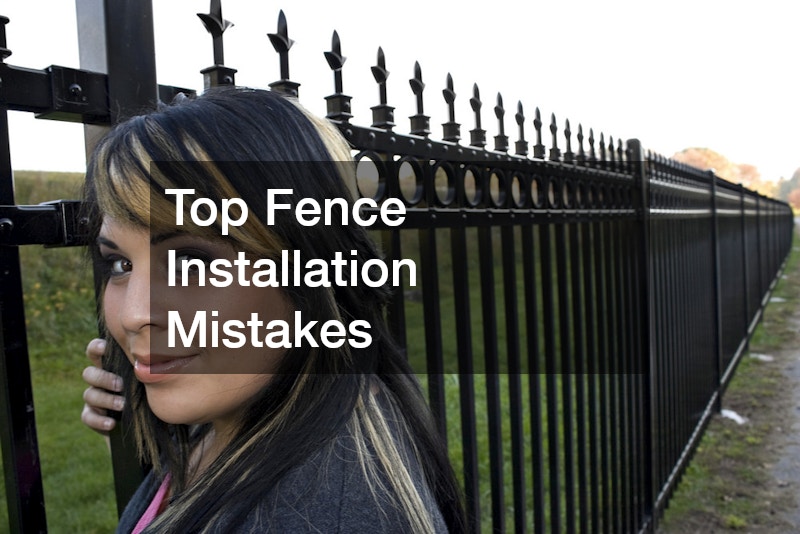Installing a fence can be a rewarding home improvement project, but it’s not without its challenges. Understanding common mistakes can help you avoid them and achieve a successful installation. In this article, we’ll address three of the most frequently asked questions regarding fence installation to guide you towards a seamless experience.
How do I ensure my fence is level?
Importance of Proper Measurements
Precise measurements are critical for ensuring your fence remains level throughout its length. Many DIY enthusiasts mistakenly assume eyeballing is sufficient, leading to uneven installations.
Capturing accurate measurements establishes a strong foundation upon which the rest of your project relies.
Even the slightest deviation can lead to a noticeable incline or decline in your fence line. This can especially be a problem when the ground you are working on is uneven or has varying elevations. Working methodically across your planned fence lines can significantly mitigate these issues.
Using a tape measure, note the distance between various points along the planned fence site. Verify these with a partner to double-check accuracy. Careful attention to detail at this stage minimizes frustrations and potential corrections later on.
Using the Right Tools
Equipping yourself with the right tools can make the difference between a successful or failed fence installation. Bubble levels and laser levels are indispensable tools for ensuring straight lines and level surfaces. Selecting tools appropriate to your specific project needs can ensure efficiency and accuracy.
Lasers levels provide precision over long distances, offering a reliable method for creating a straight fence line. Bubble levels are convenient tools for checking vertical and horizontal levelness incrementally during the installation process. These tools are investments toward achieving professional-grade results in your outdoor projects.
Ensure your tools are properly calibrated and in good working condition. Tools that are off-calibration can give misleading results, resulting in a fence that appears straight but is, in fact, wonky. Keep all necessary tools readily accessible to streamline the construction process.
Techniques for Checking Levelness
Employ practical techniques such as string lines and level boards to continually check and adjust the level of your fence during installation. A string line is an effective tool for marking fence lines and making sure each section is aligned. Keeping a taut and level string guide throughout provides a visual reference during fence post alignment.
Level boards, often overlooked, serve as an excellent companion for maintaining horizontal consistency across the fence’s length. These boards are especially useful for transferring leveling marks from one post to the next. As you progress with your installation, routinely check against these visual guides.
Adjust as necessary to accommodate any shifts or discrepancies identified during the process. Quite frequently, changes arising from soil movement or post adjustments can necessitate minor corrections. Periodic review against these leveling standards helps mitigate compounding errors over longer fences.
What materials should I use for my fence project?
Understanding Material Durability
Materials play a vital role in the longevity and maintenance needs of your fence. Wood, a popular choice, offers aesthetic appeal that blends with nature but requires regular upkeep to resist weather-related wear. Vinyl, though more expensive initially, promises durability and lower maintenance over its lifespan.
Metal fences offer robust security and are resistant to many forms of environmental damage. However, they might not offer the same flexibility in design and can be prone to rust if not treated properly. Understanding the environmental factors in your project location can influence your material choice significantly.
Choosing long-lasting materials can save you time and money in the long run. Frequent replacements or repairs due to poor material choice counteract any initial savings and add to inconvenience over time. Assessing material resilience against expected local weather conditions ensures financial prudence.
Cost vs. Quality Balance
The balance between cost and quality emerges as a critical factor in fencing projects. While low-cost materials may be tempting for immediate savings, they often incur additional expenses via maintenance and earlier replacement. Investing in higher-quality materials can entail a larger upfront investment but often pays off in lower maintenance costs.
Consider your local climate when weighing material options, as some materials outperform others under specific weather conditions. Price should never be the sole determinant if it means sacrificing critical longevity or aesthetic value. Aim for a cost-effective solution that aligns with your budget while ensuring proper function and durability.
It is helpful to conduct a cost-benefit analysis that factors potential long-term savings against initial expenditure. This analysis provides a clearer picture of overall costs and justifies more expensive but durable alternatives. Protect your investment by making informed, balanced choices that maintain fence integrity over time.
Eco-Friendly Options
Table an eco-friendly alternative for your fence project by opting for sustainable materials that reduce environmental impact. Recycled metals or composite materials offer options that feature durability plus ecologically responsible attributes. These options tend to use fewer resources during production and uplift minimal ecological footprints.
Wood sourced from renewable forests ensures your project contributes to conservation efforts. Many types of treated wood incorporate environmentally conscious processes that preserve natural aesthetics. Explore these options when planning your fence project to align with eco-conscious values.
Recycled materials, particularly in modern composites, boast long lifespans and effective service delivery while reducing dependency on scarce resources. By being part of a more extensive solution toward sustainability, choosing green materials aids ecological preservation. Choosing eco-friendly materials reflects forward-thinking values and environmental stewardship.
Avoiding common fence installation mistakes can greatly improve the outcome of your project, and it’s easier to avoid these problems by working with experienced fence companies. By addressing issues related to fencing installation such as leveling, material selection, and post-setting depth, you’ll be well-prepared to create a sturdy, reliable, and aesthetically pleasing fence. Remember, attention to detail and proper planning are your best tools for success.

